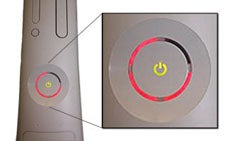Friendly Computers have seen touch screens before, so what makes the ones supported by Windows 7 so special? Below is the inside scoop.
Touch screen technology may seem shiny and new but any analyst will tell you that it has been around for decades: ATMs, grocery store self-check kiosks, even museum exhibits. But what makes Windows 7 so exciting is that no computer operating system ever incorporated native support for multitouch before. The new breed of multitouch laptops and desktops with touch screens don't need extra downloads or plugins-- multitouch just works.
Multitouch's Predecessors
To be fair, Windows 7 is not the first operating system to support some form of touch computing. Vista offered single-touch capabilities in tablet mode, and pen input is quite common as well. But as much as Microsoft would love to paint multitouch as a natural progression in its operating systems, its Apple that was the real democratizer of multiple-input touch screens. Introducing now familiar gestures like pinching, tapping, and flicking, the iPhone and the iPod Touch, made multitouch second nature to many users. Apple followed up its mobile devices with gesture-based touchpads on its MacBook and MacBook Pro models in late 2008. Though it was a bit tough to get used to the integrated mouse button and touchpad, the ability to use gestures based on up to four fingers opened up new possibilities.
A few Windows-based "multitouch" systems have come out as well—namely the HP TouchSmart TX2 and Dell Latitude XT line of laptops, as well as the HP TouchSmart desktop PCs. These systems used built-in hardware and software solutions to accommodate two-finger touch (though they still couldn't support three- and four-finger gestures). But it wasn't until early glimpses at Windows 7 this year that we saw Microsoft itself respond to the multitouch trend.
How Multitouch Works
A few months before those MacBooks hit the scene, Microsoft announced its plans for multitouch at the All Things Digital conference in California. Unlike any of its predecessors, Windows 7 natively supports multitouch functionality in touch screens and is built to accommodate up to 10 points of contact. On the Engineering Windows 7 blog, the developers highlight all the ways the OS was tweaked to optimize it for touch. It's everything from making keys on the on-screen keyboard glow when your finger is covering the letter to improving high dpi support to make small links and buttons easier to access with touch.
Though the software is similar across platforms, the PCs we've tested use different hardware solutions. The multitouch laptops we've seen so far, like the Lenovo ThinkPad X200 Tablet and Fujitsu LifeBook T5010 use dual-active digitizers, meaning they have one technology for the stylus and another, called capacitive, is activated for multitouch using your fingers. Non-tablets like the Lenovo ThinkPad T400s use a capacitive touch screen only, and many more will follow this implementation (Toshiba and Acer have already announced capacitive touch panels on their mainstream laptops).
In capacitive screens, a small current of electricity runs across the surface, with circuits at the corners. Touching the screen interrupts that current. Capacitive technology only works on smaller screens, so desktops like the HP TouchSmart 600-1055 PC and Gateway One ZX6810-01 employ optical solutions. Optical sensors are set up around the screen creating a grid. The screen reacts when your finger, pen, stylus, or any other implement break one of the beams; you don't actually have to physically touch the surface to get a response.
All of the PC manufacturers that have put out multitouch systems so far have included Windows 7's Touch Pack, a software suite that incorporates applications that work with the Windows 7 kernel to use a multitude of different gestures. For instance, Microsoft Surface Collage lets you access and manipulate all your photos to create different designs on the screen. You can drag and drop images with one motion, resize or rotate them with two fingers, and scroll through the images available on the bottom pane using the flicking motion. Other games and applications like BlackBoard and Microsoft Surface Lagoon act like tutorials for multitouch, creating objectives that force you to perfect various gestures in order to win the games.
What's Next for Multitouch
Although the Windows 7 Touch Pack certainly has that gee whiz factor, the real question regards implementations for multitouch in the future. Will it change the user experience? And can we harness that potential to take it beyond a neat trick for games and fun apps? Clearly the onus right now is on software makers to come up with revolutionary ways to integrate multitouch and expand its possibilities. Some PC manufacturers have included programs built around multitouch, like Gateway's TouchPortal and HP's TouchSmart interface. While HP's includes extra functionality like Hulu desktop and HP games, these still don't bring much more to the table than a new way to interact with Microsoft's existing touch-based programs.
Whether its niche markets like education, health care, and engineering finding new uses for multitouch, or multitouch making its way onto new platforms like netbooks, there's no question that this interface can change the way we look at computing. The Engineering Windows 7 blog sums its effect up well. In it, Steven Sinofsky, the president of the Windows division wrote, "One of my favorite experiences recently was watching folks at a computer retailer experience one of the currently available all-in-one touch desktops and then moving to another all-in-one and continuing to interact with the screen—except the PC was not interacting back. The notion that you can touch a screen seems to be becoming second nature."
For a closer look at some of the emerging Windows 7 multitouch systems, be sure to read our full reviews.



 Nothing screams "tech disaster" like a laptop on fire. Due to the intricacies of modern-day electronics, it takes only a minor manufacturing error to send your system up in flames--and not the kind generated by
Nothing screams "tech disaster" like a laptop on fire. Due to the intricacies of modern-day electronics, it takes only a minor manufacturing error to send your system up in flames--and not the kind generated by  The avatar for
The avatar for  If there were an award for the most extreme-sounding technology flaw, the
If there were an award for the most extreme-sounding technology flaw, the  We all want home theater systems that make us feel like we're inside the movies--but when your DVD player actually reproduces on-screen fire inside your home, things have probably gone too far.
We all want home theater systems that make us feel like we're inside the movies--but when your DVD player actually reproduces on-screen fire inside your home, things have probably gone too far. Would you like a virus with that purchase? In an age when keeping up with the
Would you like a virus with that purchase? In an age when keeping up with the  As if Segway riders didn't already
As if Segway riders didn't already 



